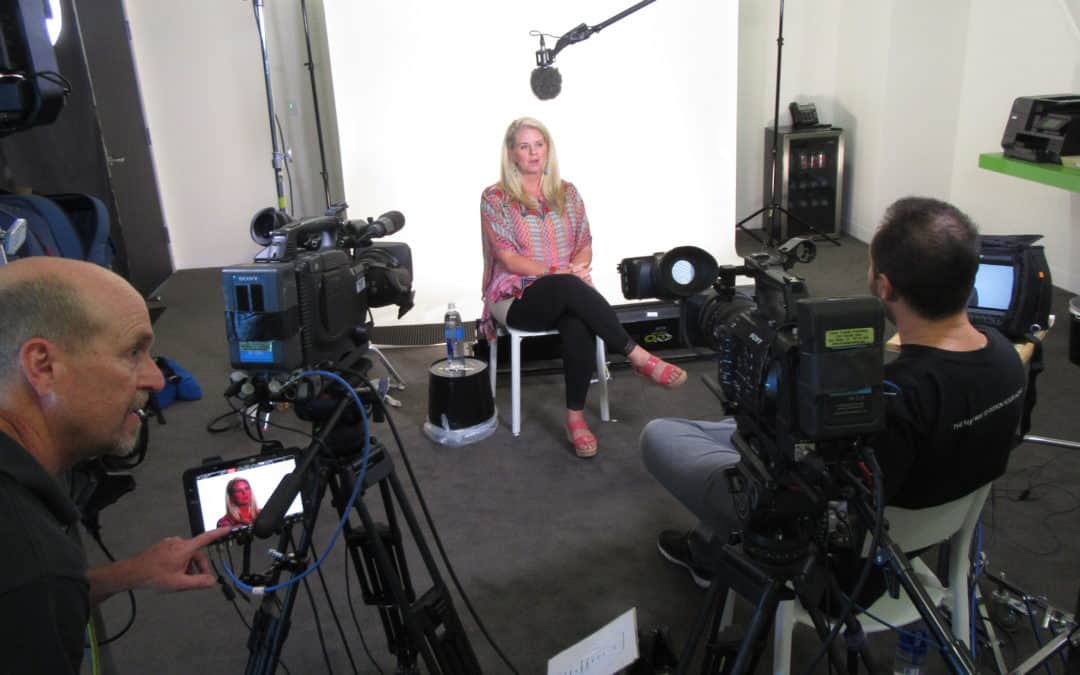Tips
How to Produce a Corporate Video
These are tips on how to produce a sterling video for your company. You have a lot of i’s to dot and t’s to cross before creating a successful company video. It’s difficult to list them all. But I’ll give you a short rundown of the most important factors.
Good Lighting
Good lighting will make you and your business look professional. Don’t rely on office lighting, or the sunlight streaming through a window for interviews. Bring in someone who knows how to light and has the right gear. You don’t necessarily need a grip truck with lots of lighting and silks. A good Director of Photography can light an interview using two or three strategically-placed lights.
Good Audio
Your audience will seldom notice unimpaired sound quality. But they will instantly cringe at bad audio. if your audio cable crosses a light cable, it can lead to an annoying hum. If you don’t get a second take after a Harley Davidson or F18 roars by during an interview, you could be in trouble. The one thing you want to avoid is a second shoot or an audio session to try and sync audio to lip movement. You may as well flush money down the toilet.
On-Camera Wardrobe
The clothes you or your talent wears on camera should be appropriate to your business. Keep it simple and elegant. Do not wear pinstripes or tweed. These textured materials tend to vibrate on screen. Avoid bright red if you can because it tends to bleed. Doctors in white lab coats usually cause a collective groan among the crew, especially if the person wearing it has darker skin. It’s a delicate balance and you do not want the lab coat to get “blown out.” – too bright. Also, beware of golden sequins with a neon green backdrop. The editor on that shoot mentioned how difficult it was to key out the sequins.
Viable Script
A good script will keep you on track and it will get your message across in the shortest possible time. Read it aloud for timing as well as how the words trip off your tongue. Fox any tongue-twisters at this stage, instead of when you are facing the camera. You can use your script to create a shot list for the DP, and make sure they collect all the shots you need for your video.
Length of Show
Back in the 1980’s, our clients wanted 20- to 30-minute videos to showcase their product or service. Then in the 1990’s, they requested 12- to 15-minute videos. You can see where I’m going with this, can’t you? Now, in the “new millennium,” videos are much more ubiquitous and people have a lot less time. You can now realistically create five 30-second to one-minute videos from the footage you collect during a day’s shoot. If your audience is a “captive” one, i.e., you are making an instructional video on how to use a product or service, you can go as long as it takes to get your point across.
It’s About the Viewer
Make your video about your audience. No one really cares about when your company was founded, or how many awards you’ve won over the last 25 years. Tell your customers how to improve their lives in some way, how to achieve happiness or satisfaction by using your product or service.
If you promise to do something for your viewer, back up your claim with proof. That’s a powerful message that hopefully the viewer will not be able to resist. Use data with sources or customer/partner/industry expert testimonials.
Location, Location, Location
Be careful to choose a good location. Keep in mind factors such as how the light and sound will be at the time of the shoot. Try and find a space with depth of field (length). If you need more than one backdrop, consider using a green screen or other type of backdrop so the crew does not have to tear down and set up multiple times. If you have a crew moving from location to location, it’s less time taping a quality interview.
Consider a Teleprompter
Few people who are not professional actors are comfortable speaking directly to a camera. If you know what you want to say and can speak off the cuff, then simply imagine you’re talking to a friend who’s just to the side of the camera. The DP can step to the side where you can talk to him/her. Or, if you have difficulty memorizing lines or speaking candidly, consider renting a teleprompter system with an operator. The operator will input your script into their laptop and scroll your script in front of the camera. You will forget you are talking into the lens, as the teleprompter sits directly in front of it.
Call to Action
End your video with a call to action. You’ve put all this effort into getting your message across. Now, you need to tell the audience what you’d like them to do, and reel in the sale.
Summary
To summarize these important tips:
- Pre-Production typically takes more time than the actual shoot. Make sure your script, location, talent and crew are all lined up and ready to go.
- Give yourself more time than you think you need. The best ideas take time to develop, plan and execute.
- Remember Murphy’s Law and plan for chaos. The best-made plans sometimes go awry so be ready for extra takes, more interviews and B-Roll, etc.,
- Have water and snacks available for your talent and crew
- Remember to have fun. If you aren’t having fun, then why are you doing it?












